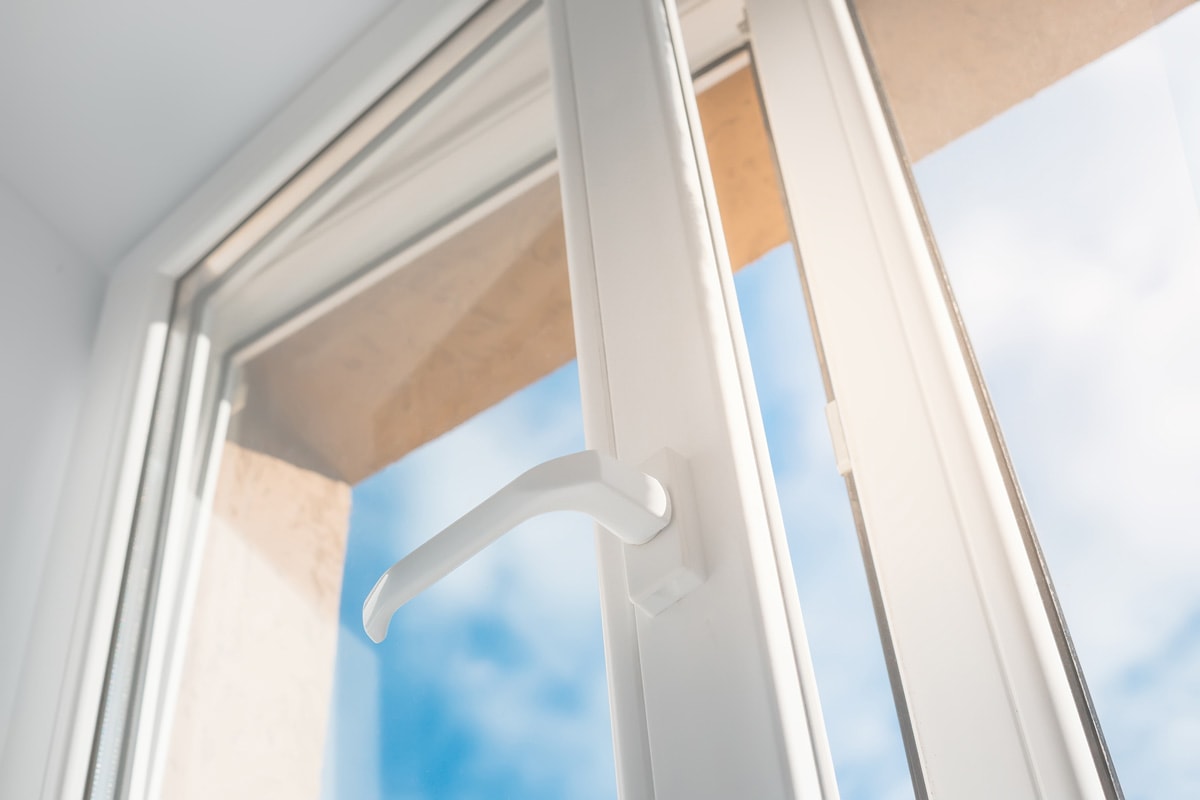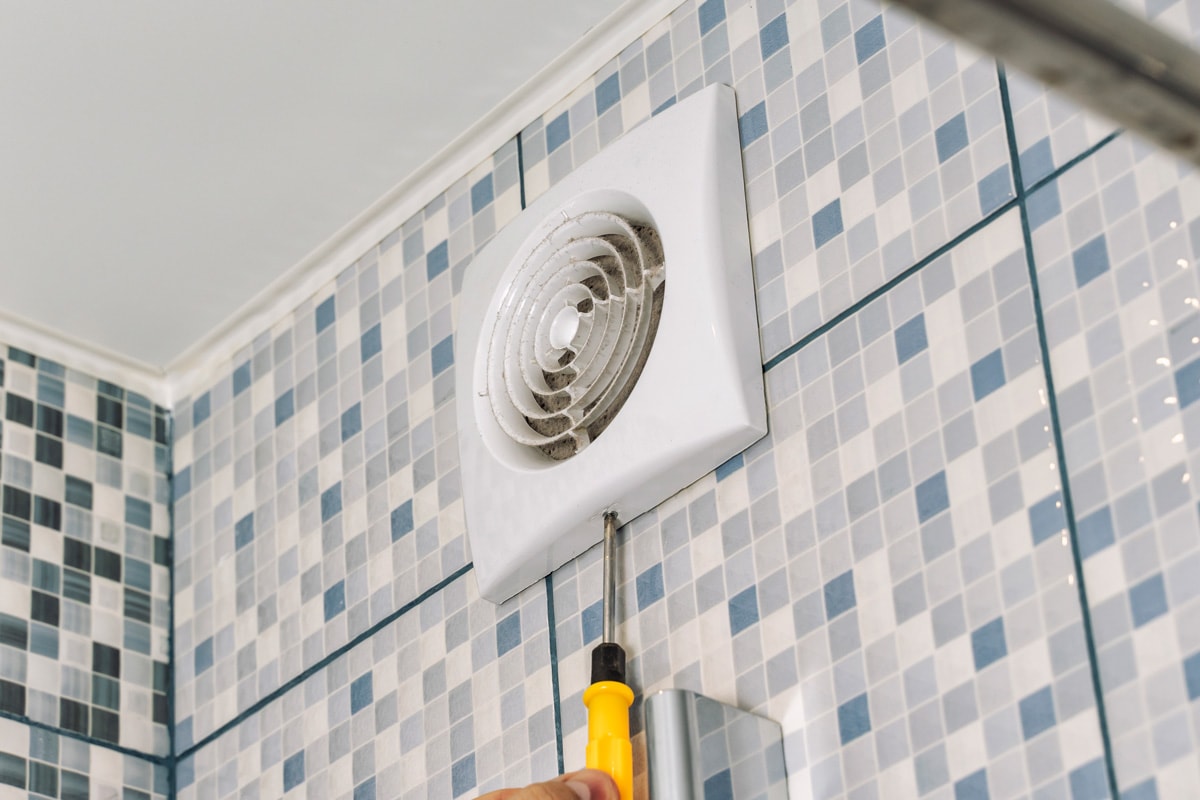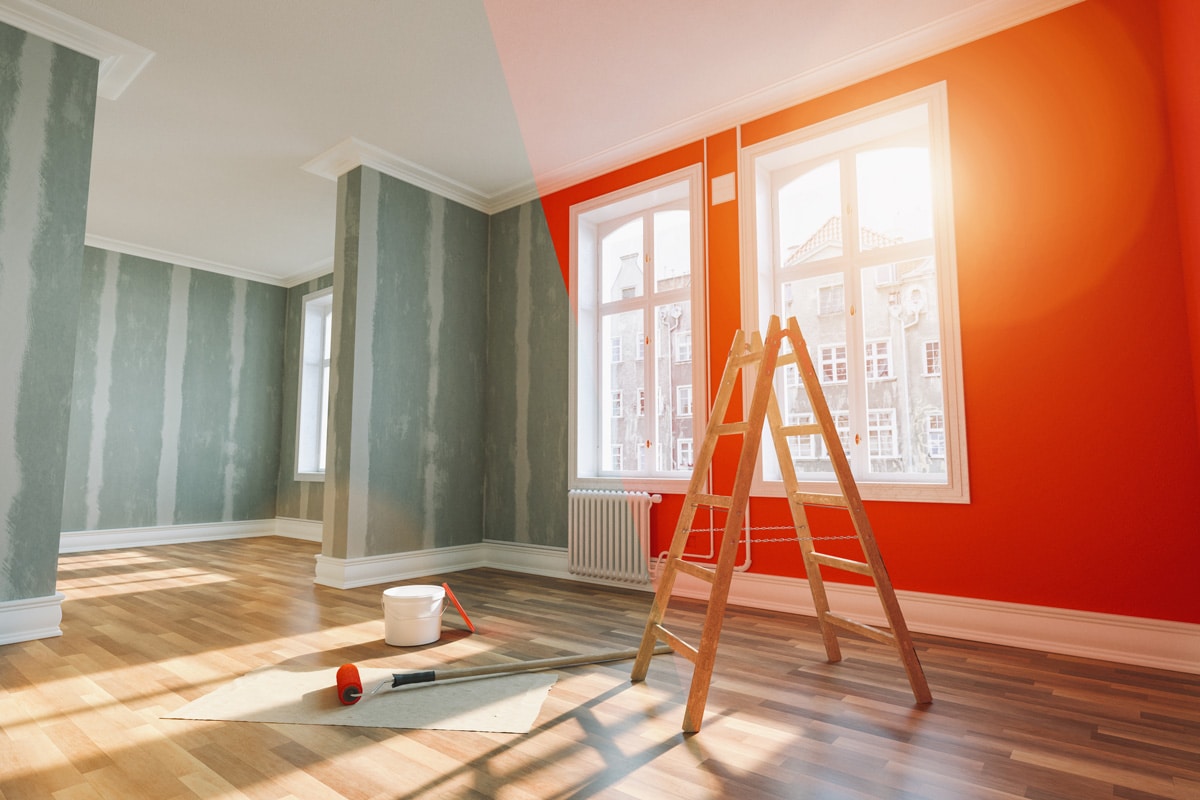Painting is a task that can be completed without any professional help. If you're getting ready to do some interior painting, then you may be wondering about how you can do it while being safe. After doing some research, we can tell you exactly how to ventilate a room that's being painted!
Use one or more of the methods below to ventilate a room for painting:
- Open windows and doors.
- Use ceiling and box fans.
- Turn on exhaust fans in the bathroom and kitchen.
- Turn on the HVAC fan.
- Use an air purifier.
Improper ventilation while painting is a common and potentially life-threatening mistake. Using a low VOC (volatile organic compound) paint can reduce the number of chemicals in the air, but it's still important to know how to properly ventilate a room. Keep reading to learn more about keeping your air clean while painting, how long the room should be ventilated, and more important information!
![One man, mature male painter painting a wall with paint roller, indoors in a house., How To Ventilate When Painting [And How Long After?]](https://hvacseer.com/wp-content/uploads/2022/10/30.-How-To-Ventilate-When-Painting-And-How-Long-After.jpg)
How To Ventilate Rooms While Painting
Breathing paint fumes for long periods of time can cause several health problems, including headaches and nausea. Let's take a closer look at the best ways to ventilate rooms while painting.
Open Windows And Doors

One of the best things to do when painting inside is to make sure that you open your windows and doors. Before painting, you should open up all the windows inside the room that you'll be painting.
It's best to open the windows up as far as they can go. Fully open windows will help keep fresh air coming in and the chemicals going out. In addition, you should keep the doors to the room you're painting open.
The most important windows and doors to keep open are the ones closest to the room being painted. However, you can open additional windows or doors if you're concerned about fumes reaching other parts of your house.
After you're finished painting, you can close the door to the room you painted while keeping the windows open. This will help keep the paint smell from entering the rest of your house while still giving the toxic fumes a way to exit.
If you have enough windows, you can also keep hallway doors closed while painting. However, keeping the doors open will provide more ventilation.
Use Fans

Fans are an excellent way to help circulate air. If you're not painting your ceiling, then make sure that your ceiling fan is turned on. You should also adjust the direction the fan spins depending on where it is in relation to the window.
If your fan is in the center of the room or far from the window, set it to spin counterclockwise. If the fan is close to the window, then it should be spinning clockwise. These directions will help circulate air without interfering with the open windows.
Another great thing to utilize is box fans. You can place fans in the window to help push air out of the room. In rooms with multiple windows, you can set up one fan to push air out and the other to bring air in. Rooms with one window should have a fan pushing air outside.
Use Bathroom And Kitchen Exhaust Fans

If you're working in rooms that are close to your bathrooms or kitchens, then you may be able to use them to help ventilate.
First, you'll have to make sure that these vents route to the outside. Many newer homes just vent the air into an attic, especially with kitchen ranges. You may need to visually inspect the outside of your house to find any vents.
Run Your Central Fan
Most HVAC systems recycle air that is already inside your house. So, running it while painting will spread the fumes everywhere else.
However, there is a trick that can increase the ventilation in a specific room. To do this, you should close all the air vents except the room you're painting. Then, open the window and close the door. This works even better if you have a fan mounted in the window.
You can also use high-quality air filters to help clean the air getting into your fans while doing this. A HEPA filter with activated carbon can help eliminate paint fumes. However, you should remember that running the fan with closed vents can damage your system in the long run.
Check out these HEPA filters on Amazon.
Use An Air Purifier
An air purifier is one unique way to help ventilate a room while painting. You'll need to have a quality machine and filter to accomplish this. At a minimum, you'll need a pleated HEPA filter. These filters are capable of removing up to 99.9% of airborne particles.
Unfortunately, HEPA filters don't always remove the VOCs from paints. The best purifiers for removing these chemicals have a multi-step filtration system. For best results, your air purifier will go through the pre-filter phase, the carbon-activated filter, and the HEPA filter.
Take a look at this Bissell brand air purifier on Amazon.
How Long To Ventilate After Painting?
After painting, you should continue to ventilate the room. Most paints are dry within the first 24 hours of painting. However, there may still be lingering chemicals in the air.
Most experts recommend ventilating painted rooms for between 48 and 72 hours. Keep using fans and keep the windows open in that room. You can also close all doors to help prevent the fumes from escaping.
Try to time your painting projects to help speed up the drying process and make it easier for you you keep your windows open. If possible, paint during the fall or spring when it's least likely to rain. These times will allow you to keep your windows open for longer periods, which will help speed things up.
How Do You Reduce Paint Fumes Faster?
Excellent ventilation is the best way to reduce the smell of paint fumes the fastest. However, there are a few things that you can do that may help with stubborn odors.
One way is with halved onions. After peeling and cutting an onion, put the separate pieces on a different plate. Then, put the dishes on opposite sides of the painted room.
You can also try a combination of salt, lemon, and water. For this, you should take slices of lemon and a quarter cup of salt. Combine these ingredients into bowls of water. Make multiple bowls and place them around the room.
For either of these methods, it's essential to let them sit overnight or until the fumes have dissipated. You should also get rid of the food items after using them; they are not safe to consume after taking in the VOCs.
Can Paint Fumes Travel Through Walls?

There is a chance of paint fumes traveling through damage within walls. However, this would most likely only happen if there was extensive damage.
A bigger concern to have is the venting systems. This is a common problem in apartment complexes. Each dwelling tends to share a venting system. So, if painting is being done in one unit, fumes can potentially get to a completely different unit.
Can You Sleep In A Room With Paint Fumes?
You should avoid sleeping in rooms with paint fumes unless you used a type of paint with low VOCs. Many rooms painted with low VOC paint are safe to be in within 24 hours.
In general, it is best to keep those with a greater health risk away from these rooms. People like babies, the elderly, or people with asthma may react strongly to VOCs and their fumes.
Check out this low-VOC paint on Amazon.
In Closing
Ventilating rooms is important both while you're painting and until the fumes dissipate entirely. Always keep windows and exterior doors open to help create cross ventilation. Also, use fans to help move air faster.
Take a look at these other great posts before you go:



